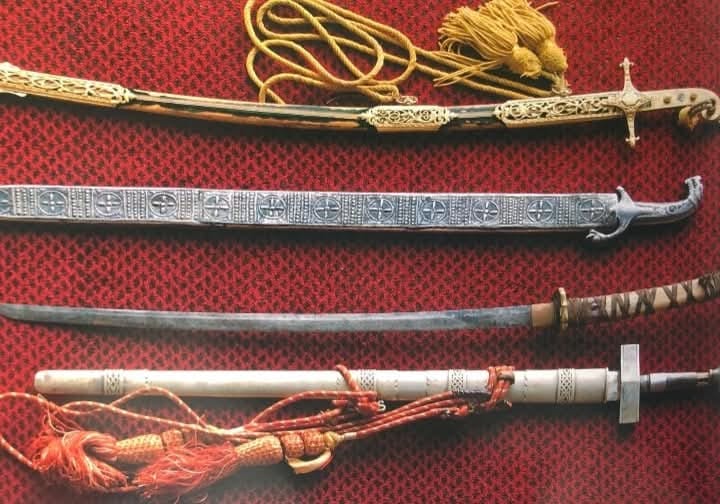The Ottomans conquest of Egypt was happening at approximately the same time as Muhammed Kanta's rebellion against Songhai, and Ottoman expansion along the African Mediterranean cost over the next several decades was mostly due to the efforts of corsairs, who aligned themselves with the Sublime Porte. I am not aware of any evidence for direct interaction between Kebbi and Constantinople, but of course trade routes reached further than diplomacy.
Trying to study early swords is like trying to figure out the full picture of a puzzle consisting of a thousand pieces based on only a few pieces available. This is why I find the nimcha from the Gold and Damascus Steel exhibition exciting, as its hilt is the closest thing I have seen to the hilt on the "Sword of Kanta".
I tried to search for pictures of the "Sword of Kanta" online and only found the one below. Apparently all of the swords are part of the regalia at Argungu. The top one was a gift from Queen Elizabeth II. Then we have our sword, unfortunately still in its 19th century Bida sheath. The katana like thing is described as a judicial sword for executions in use for the last two centuries - if true, certainly an interesting story in itself. The bottom one reportedly belonged to Muhammadu Sama, who ruled in Argungu between 1920 and 1934 (courtesy of Wikipedia), with the scabbard reportedly having a 25% gold content.
